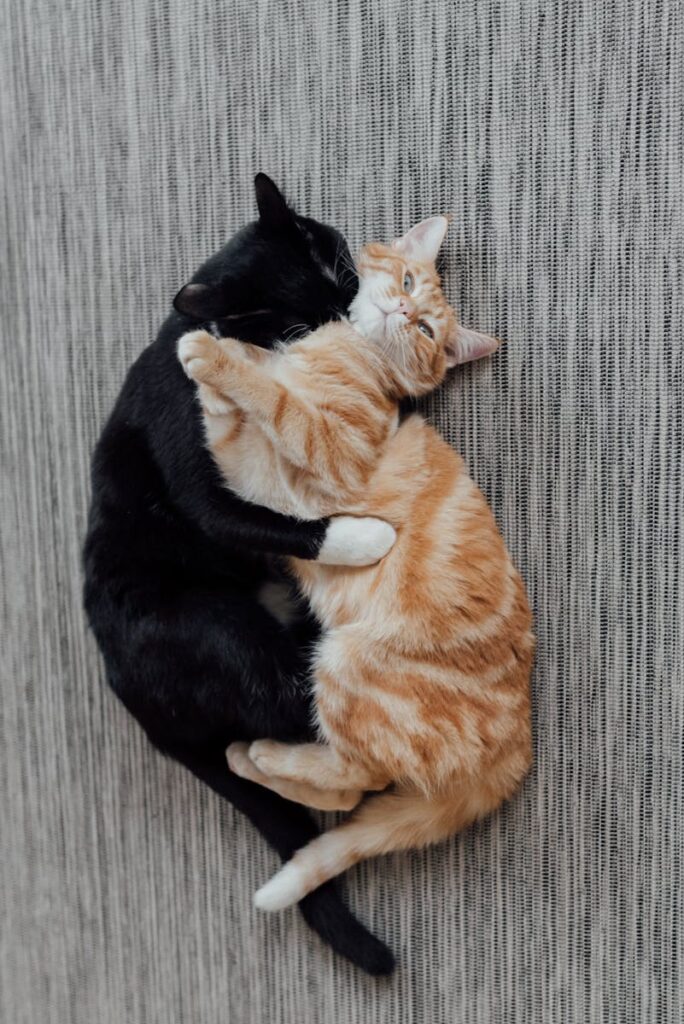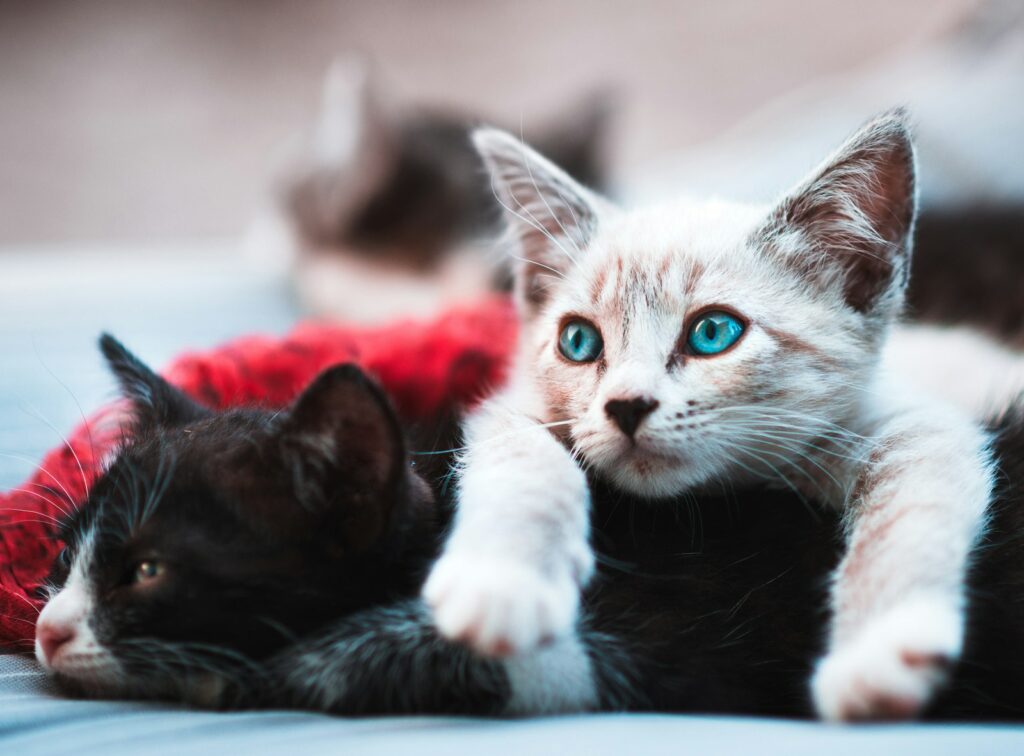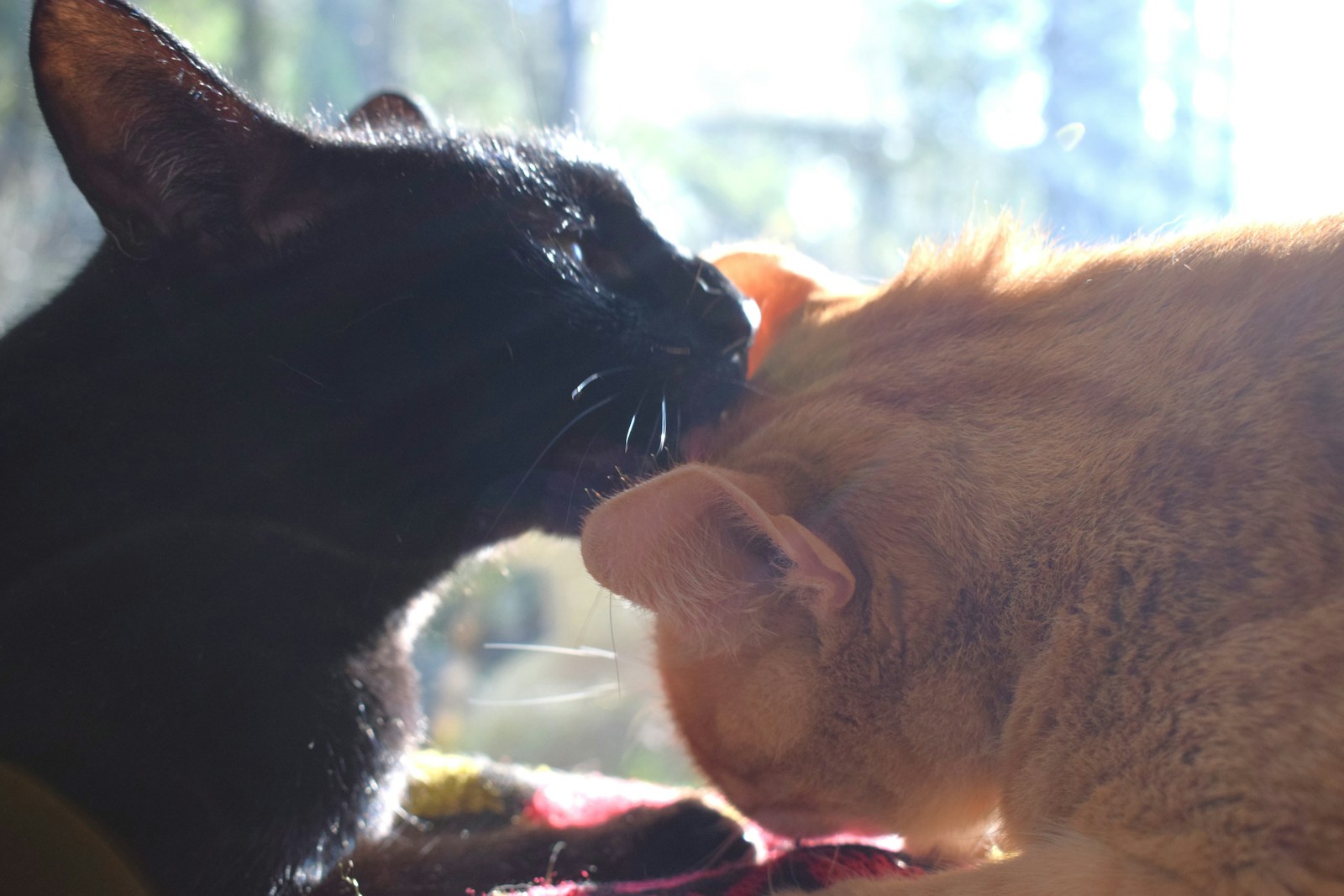DISCLAIMER: KATE’S K9 PET CARE PROUDLY PROVIDES DOG WALKING, CAT SITTING, SMALL ANIMAL PET CARE, PET TAXI SERVICES, “ALMOST OVERNIGHT” PET CARE, AND CONVENIENT PET SUPPLY DELIVERY. FOR FULL DETAILS ABOUT EACH OF OUR SERVICES, PLEASE VISIT OUR SERVICE PAGES TO LEARN MORE ABOUT HOW WE CAN SUPPORT YOUR PET’S NEEDS. TO SEE WHERE WE CURRENTLY OPERATE, PLEASE VISIT OUR SERVICE AREA PAGE.
Bringing a new cat home should be exciting, not stressful. But when cat introductions go wrong, the consequences can last for months or even years. Two cats who could have been best friends might end up as sworn enemies, all because their first meeting was rushed or mishandled.
Understanding the warning signs when introducing cats can mean the difference between a harmonious multi-cat household and ongoing territorial disputes. Whether you’re introducing a new kitten to your resident cat or helping two adult cats coexist, recognizing these red flags early allows you to adjust your approach before problems become permanent.
This guide will walk you through the most important warning signs when introducing cats, explain what each signal means, and provide actionable steps to get your cat introduction back on track.

Photo by Arina Krasnikova on Pexels
Why Proper Cat Introductions Matter With Two Cats
Cats are naturally solitary animals, unlike dogs who evolved in pack structures. When you bring a new cat into your existing cat’s territory, you’re essentially asking your resident cat to share their most precious resources: food, water, litter boxes, and your attention.
The introduction process serves as a bridge between these two worlds. Done correctly, it allows both cats to gradually accept each other’s presence without feeling threatened. Rush this process, and you risk creating lasting negative associations that can take months to overcome.
Many cat owners make the mistake of putting two cats in the same room immediately, hoping they’ll “work it out.” This approach rarely succeeds and often creates more problems than it solves. Instead, successful cat introductions follow a structured timeline that respects each cat’s need for security and control in a separate room.

Photo by Raul Varzar on Unsplash
The 8 Critical Warning Signs to Watch For
1. Aggressive Body Language By New Cat Or Older Cat
Aggressive behavior between cats manifests in several unmistakable ways. Watch for flattened ears pinned back against the head, dilated pupils that make the eyes appear black, and an arched back with fur standing on end. A cat displaying aggressive behavior may also turn sideways to appear larger and more intimidating.
Hissing, growling, and spitting are vocal warning signs that shouldn’t be ignored. These sounds indicate that one or both cats feel threatened and are preparing to defend themselves. Unlike play behavior, aggressive encounters involve stiff, tense body movements rather than fluid, relaxed motions.
If you observe aggressive behavior during an introduction, immediately separate the cats and return to an earlier stage of the introduction process. Give both cats several days to calm down before attempting any further contact and keep the old cat out of the new cat’s room
2. Prolonged Hiding or Withdrawal
When a new cat or resident cat spends excessive time hiding under furniture, in closets, or in their designated safe room, this signals overwhelming stress. Some hiding is normal during the first few days, but cats should gradually become more curious and willing to explore.
A cat who refuses to eat, drink, or use the litter box while hiding requires immediate attention. These behaviors indicate severe anxiety that can quickly escalate to health problems. The stressed cat may also become more susceptible to illness due to compromised immune function.
Create additional hiding spots using cardboard boxes or cat shelves to help anxious cats feel more secure. Ensure each cat has access to their own litter box, food, and water in their respective areas.
3. Resource Guarding Cat Behaviors
Resource guarding occurs when one cat prevents another from accessing food, water, litter boxes, or favorite resting spots. This behavior often develops gradually and may not be immediately obvious to cat owners.
Signs include one cat consistently eating first while the other waits, blocking access to the litter box area, or claiming the sunniest windowsill while preventing the other cat from approaching. Some cats may not show obvious aggression but instead use their body position to control access to resources.
The solution involves providing multiple resources throughout your home. Follow the “plus one” rule: if you have two cats, provide three litter boxes, multiple feeding stations, and several water sources. This approach reduces competition and gives both cats choices.
4. Elimination Problems
Stress-related litter box issues often emerge during cat introductions. A previously house-trained cat may start urinating or defecating outside the litter box, particularly near doorways, windows, or areas where they’ve encountered the other cat’s scent.
These accidents aren’t spite or revenge—they’re stress responses. The cat may be trying to establish territorial boundaries or cope with anxiety. Some cats also develop urinary tract infections during stressful periods, making litter box avoidance a medical necessity.
Address elimination problems by thoroughly cleaning accidents with enzyme-based cleaners, providing additional litter boxes for all the cats in quiet locations, and consulting your veterinarian to rule out medical causes.
5. Excessive Vocalization
While some vocalization during introductions is normal, excessive crying, yowling, or calling indicates distress. This behavior often occurs when cats can smell others’ scent or hear each other but cannot see the source of the new scent.
Female cats may be particularly vocal, especially if they’re responding to pheromones from an unfixed male cat. Older cats prefer to vocalize more when their established routine is disrupted by a new household member.
Reduce excessive vocalization by slowing down the introduction process and ensuring both cats feel secure in their respective spaces. Playing calming music or using pheromone diffusers can also help reduce anxiety.
6. Loss of Appetite or Overeating
Stress affects cats’ eating habits in different ways. Some cats stop eating entirely when faced with the stress of a new cat, while others may guard food resources by eating quickly or consuming more than usual.
A cat who stops eating for more than 24-48 hours risks developing hepatic lipidosis, a serious liver condition. Conversely, stress eating can lead to digestive upset and weight gain. Both extremes require intervention.
Monitor each cat’s food intake carefully during introductions. Feed cats in separate areas to reduce competition and ensure both are eating appropriate amounts. If appetite changes persist beyond a few days, consult your veterinarian.
7. Regression in Trained Behaviors
Previously well-behaved cats may regress during stressful introductions. This might include scratching furniture they previously ignored, forgetting their names when called, or abandoning other trained behaviors.
Scratching, in particular, often increases during cat introductions as both cats attempt to mark territory and relieve stress. You may notice new scratch marks on furniture, carpets, or door frames—especially near areas where the cats have encountered each other.
Provide additional scratching posts throughout your home and use positive reinforcement to redirect unwanted scratching. Be patient with behavioral regression, as most cats return to their normal habits once they adjust to the new situation.
8. Physical Symptoms of Stress
Chronic stress during cat introductions can manifest in physical symptoms including excessive grooming that leads to bald patches, changes in sleeping patterns, or digestive issues like diarrhea or vomiting.
Some cats develop stress-related skin conditions or experience changes in their coat quality. Others may show signs of upper respiratory infections, which cats are more susceptible to when their immune systems are compromised by stress.
If you notice physical symptoms, separate the cats immediately and consult your veterinarian. Address any medical issues before continuing with introductions, as sick cats are less likely to respond positively to new situations.

Photo by Leon Seibert on Unsplash
How to Respond When You See Warning Signs
When warning signs appear, your first instinct might be to push through and hope things improve. Resist this urge. Instead, take a step back and slow down the introduction process.
Immediately separate the cats if you observe aggressive behavior, excessive stress, or any physical symptoms. Return each cat to their safe space and give them several days to decompress before attempting further contact.
Reassess your introduction timeline. Most successful cat introductions take 2-4 weeks, but some cats need several months to fully accept each other. There’s no shame in taking extra time—patience now prevents long-term problems.
Consider using feeding techniques that create positive associations. Feed both cats on opposite sides of a closed door, gradually moving their food bowls closer to the door over time. This helps cats associate each other’s presence with good things (food) rather than stress.

Photo by Ralph Darabos on Unsplash
Creating the Right Environment for Future Best Friends
Set up your home to minimize territorial disputes before they begin. Provide vertical territory using cat trees, shelves, or tall furniture that allows cats to observe their surroundings from elevated positions. Cats feel more secure when they can survey their environment from above.
Create multiple pathways through your home so cats can move around without being forced into close contact. Baby gates can be useful tools for allowing visual contact while maintaining physical separation during the introduction process.
Ensure each cat has their own resources in different areas of your home. This includes separate feeding stations, water bowls, litter boxes, toys, and resting areas. Even after successful introductions, maintaining separate resources helps prevent future conflicts.
When to Seek Professional Help
Some cat introductions require professional intervention. Contact a certified cat behaviorist or your veterinarian if aggressive incidents result in injuries, if stress symptoms persist for more than two weeks, or if either cat shows signs of depression or illness.
Cats with previous traumatic experiences, senior cats set in their routines, or cats with significant age differences may need specialized introduction protocols. Professional guidance can help you develop a customized approach for challenging situations.
Don’t view professional help as failure—it’s an investment in your cats’ long-term wellbeing and your peace of mind.
Building Long-Term Harmony
Successful cat introductions don’t end when the cats stop showing warning signs. Building a harmonious multi-cat household requires ongoing attention to each cat’s needs and environmental management.
Continue providing multiple resources even after cats seem to get along well. Cats’ relationships can change over time due to aging, illness, or environmental stressors. Maintaining abundant resources prevents competition and reduces the likelihood of future conflicts.
Establish routines that give each cat individual attention and play time. This prevents jealousy and ensures both cats maintain their bond with you. Interactive play sessions can also help cats release energy and reduce stress.

Photo by Omar Ramadan on Unsplash
Your Path to Peaceful Coexistence
Recognizing warning signs during cat introductions with all cats involved isn’t about expecting failure—it’s about setting both cats up for success. Every cat is unique, and some need more time and patience than others to accept changes in their environment. Remember that cats who start with rocky introductions can still become close companions given proper time and management. Some of the strongest feline friendships develop between cats who initially showed concerning warning signs but received patient, gradual introductions.
The key lies in respecting each cat’s individual personality and comfort level. By watching for these warning signs and responding appropriately, you’re giving both cats the best possible chance at building a positive relationship that will enrich their lives for years to come.







